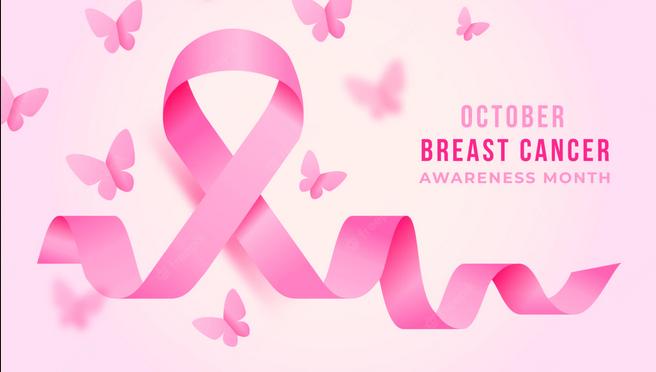
Africa-Press – Gambia. Breast cancer is a disease in which cells in the breast grow out of control. There are different kinds of breast cancer. The kind of breast cancer depends on which cells in the breast turn into cancer. Breast cancer can begin in different parts of the breast.
Breast cancer is the second leading cause of cancer death in women worldwide (after skin and lung cancer) and this month has been internationally declared as the “World Awareness of Breast Cancer”.
The incidence of breast cancer begins in early adulthood, with a sharp rise in to the time of menopause and decreases after menopausal age of the women. Although African, Asian and African- American women have a slightly lower incidence of breast cancer after age 40 than white women, they have a slightly higher incidence rate of breast cancer before age 40.
However, African women are more likely to die from breast cancer at any age in most African countries due to lack of awareness and also due to lack of facilities for diagnosis and treatment of this deadly disease. Breast cancer is not just a disease that affects only women, one present of all breast cancer occurs in men too.
Diagnosing breast cancer
Tests and procedures used to diagnose breast cancer include: Breast exam. Your doctor will check both of your breasts and lymph nodes in your armpit, feeling for any lumps or other abnormalities.
Mammogram. A mammogram is an X-ray of the breast. Mammograms are commonly used to screen for breast cancer. If an abnormality is detected on a screening mammogram, your doctor may recommend a diagnostic mammogram to further evaluate that abnormality.
Breast ultrasound. Ultrasound uses sound waves to produce images of structures deep within the body. Ultrasound may be used to determine whether a new breast lump is a solid mass or a fluid-filled cyst. Removing a sample of breast cells for testing (biopsy). A biopsy is the only definitive way to make a diagnosis of breast cancer.
A biopsy sample (sampling) is also analyzed to determine the type of cells involved in breast cancer, the aggressiveness (grade) of the cancer, and whether the cancer cells have hormone receptors or other receptors that may influence your treatment options.
How do breast cancer cells grow?
Normally, the cells in our body grow and divide in a controlled manner to replace older, damaged cells. Sometimes cells begin to grow and divide in an uncontrolled manner and when this happens, they can develop from normal change to abnormal cells so called “malignant” tumors. Normal or benign growths will grow to a certain size, but will not spread to other parts of the body, and are generally considered harmless.
But any lump that does not shrink or disappears after one of these occasions should be assessed by health professionals. This in particular when there are any growths in the breasts of women with the family history of breast cancer or women in their menopausal or after menopausal age.
What are the individual risks getting breast cancer?
Several risks have been identified as having a potential relationship to the development of breast cancer. Family history of breast cancer can have a significant impact as a risk, but you should not automatically assume that any case of breast cancer in your family means you are a high-risk candidate.
For example, if your grandmother was diagnosed with breast cancer at a later age, this does not mean that your risk of the disease is increased as some old age diseases are not necessarily inheritable from old age male and female such as old age high blood pressure, diabetes including some cancer diseases. Other patterns of family history may strongly suggest inherited Gene abnormalities that are independent of normal again, and are associated with a relatively higher risk of breast cancer.
The following signs suggest that there may be an inherited gene abnormality in your family (These apply to either your mother’s or your father’s side of the family):
Having a mother, sister, or daughter with breast cancer
Having multiple generations of family members affected by breast cancer or, Ovarian cancer, having relatives who were diagnosed with breast cancer at young age (under 50 years old), Having relatives who had both breasts affected by cancer
Further risks are:
Advanced age, menstrual periods beginning at an early age (before the age of 9 to 10), never having children, obesity and being overweight, taking oral contraceptives for longer than 10 years, excessive alcohol consumption, smoking heavily for many years.
I must emphasize that obesity and eating high fat foods contribute tremendously to the developing number of life-threatening diseases including breast cancer. This is based on several large medical studies confirming the link between obesity and development of cancer disease.
Avoiding high fat foods is a healthy choice for many reasons: it lowers “bad cholesterol” and increases the “good cholesterol” and certainly decreases the risk of developing not only cancer disease but also common diseases like high blood pressure and diabetes. A healthy diet and regular exercises help keep your weight at a healthier level and prevent you from developing life threatening and deadly diseases.
Signs and symptoms of breast cancer
Nearly all breast tumors are found by physical examination (either by self-breast-examination or by health care profess signals), scanning and mammogram (a special x-ray) or by scanning of the breast that can detect any normal or abnormal changes of the breast tissues before it is big enough to be felt during a physical examination. Symptoms can vary based on the severity of the disease. There are specific factors that should raise suspicion of a growth in the breast.
These include:
A lump felt on one or both breasts by self-breast-examination A painful thickening or swelling on the breast or nipples A discharge from the nipples, the most common initial signs of breast cancer can be diagnosed on mammogram and the abnormalities can often be seen long before a woman or a doctor detects any physical changes in the breast. However, breast cancer, when advanced, causes pain, redness and swelling of the skin.
It is strongly advised that if a woman has been diagnosed with any kind of breast infection and that infection does not improve on treatment (approximately within 2 weeks) then the possibility of suspected abnormalities should be considered and advice should be sought from health professionals.
Risk factors you can change
Being physically active can help lower your risk of getting breast cancer. Not being physically active. Women who are not physically active have a higher risk of getting breast cancer.
Being overweight or having obesity after menopause. Older women who are overweight or have OBESITY have a higher risk of getting breast cancer than those at a healthy weight.
Taking hormones. Some forms of hormone replacement therapy (those that include both estrogen and progesterone) taken during menopause can raise risk for breast cancer when taken for more than five years. Certain oral contraceptives (birth control pills) also have been found to raise breast cancer risk.
Tips on breast self-examination
Women should give themselves a breast self-exam each month, beginning at the age of 20. This exam should be performed at about the same time every month. Here are suggestions on what to look for during breast self-exams:
Any changes in an existing lump or a new lump that you have not felt before, abnormal thickening of one or both breasts, discharge from the nipples that is bloody of sticky
differences in the skin of your nipples especially dimpling or puckering of the skin, an increase in size of one breast Any of these warning signs should be investigated and diagnosed by a doctor or a trained medical professional as soon as possible.
How is breast cancer treated?
The care chosen to treat an individual with breast cancer depends on a number of criteria including the type and stage of the cancer. The care given may consist of surgery, radiation, chemotherapy or a combination of all., Treatment regimens may be used to prevent the spread of breast cancer to the opposite breast and to reduce the incidence of spreading to other organs.
Breast cancer and pregnancy Breast cancer is one of the most common cancers in pregnant women and tends to affect women in their mid-thirties. Although only about one in every 3000 pregnant women get breast cancer, the disease can be devastating to both the mother and the child. A major problem is that a lot of changes take place in women’s breasts during pregnancy.
Where in The Gambia you can seek advice
Doctors, midwives and trained nurses throughout the country are happy to advise you on this common disease and are able to arrange for referral to specialists. Fortunately, most facilities to perform appropriate diagnoses on breast diseases are now available in the Gambia.
For further information please contact, and Gambia The FRANCIS De GAULLE Njie FOUND Website www.fdnf.gm, e-mail [email protected] tel.8903104 where you can get information about breast diseases and in particular the correct way of a self-breast examination.
We are delighted to advise and help you for your worrying of this common disease. Email: Dr Azadeh on [email protected] gmail.com Also and Dr Azadeh on WhatsApp only on 7774469.
Source: The Gambia | Standard News From The Gambia
For More News And Analysis About Gambia Follow Africa-Press





